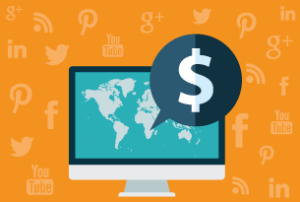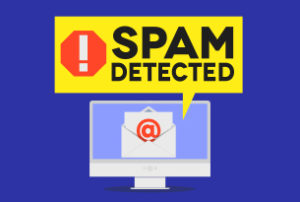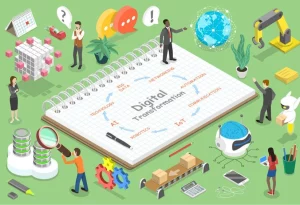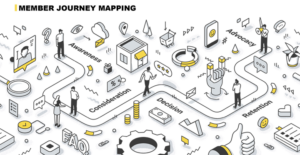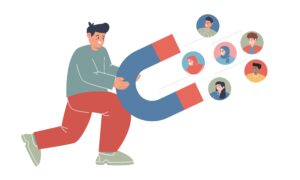Relationships are integral to all aspects of our life, both personal and professional. Organizations cannot market a product or service without establishing a relationship founded on trust, transparency and credibility.
The Relationship Curve model describes how relationships improve over time: the target (prospective client, prospective member, prospective employee, etc) moves through the stages of awareness, preference, trial, and commitment.
The job of marketing is to put together initiatives that help that target person or organization along on this journey. Those initiatives can be as simple as PR (awareness), blogging (preference), or an interview (trial). Or they can be more complex, and cross a number of these stages such as a Social Media strategy or a new product launch plan.
Important marketing question: What happens after Commitment? If there is a significant investment in marketing to get a target to finally transact, how can this marketing investment be spread across transactions beyond the initial one, both additional ones with the same client, and additional ones through referral?
To answer, look more deeply at two parts of the relationship curve: Trial and Commitment. Trial is the test drive, while commitment is the transaction. If the target transaction is to sell a book, then a potential Trial initiative might be to give away a few chapters, or to provide a discount coupon. Or if the target commitment is a large service engagement or a large product sale, one Trial initiative might be to sell them a book. The book in these two cases serves two purposes: a demonstration of commitment, and a trial for the next transaction. Every transaction is merely a test drive – a Trial – for the next transaction. We define this as the Relationship Chain.
******
Yes, the marketing strategist must determine the initiatives underlying the Relationship Curve, but to build a strong, engaged “ecosystem”, the Relationship Chain demands far more, starting with excellent delivery. Not only must there be no buyer’s remorse, but the post-commitment experience must vastly exceed their expectations.
The next step is to define the potential chain of next-step products and services that your target might be interested in – the actual Relationship Chain.
For an association, the Relationship Chain might look like this:
- Attends monthly meeting as a guest.
- Becomes a member.
- Chooses to attend annual conference.
- Volunteers on a committee or at an event.
- Sits on Board.
- Seeks certification.
- Teaches courses in the area.
In professional services – say an accounting firm – the Relationship Chain would be quite different:
- Attends a tax planning seminar.
- Decides to get a second opinion on a corporate tax matter.
- Moves corporate tax to the firm.
- Moves audit and advisory services to the firm.
- Moves personal tax to the firm.
- Asks the firm to help with a transaction due diligence.
- Responds positively to a pro-active pitch for management consulting re technology.
- Attends the firm’s training sessions.
- Sits on the firm’s industry advisory board.
Finally, with a strong relationship comes the right to ask them for help. Fundamentally, this means doing three things:
- Ask for testimonials, via LinkedIn, and also on video.
- Empowerment: help tool them up to advocate on your behalf, and share their experience with you with their network.
- Ask directly for referrals.
This week’s action plan: Look at your long-time contacts – what does their Relationship Chain look like? Now, look at the most recent people or organizations that have made a commitment to you: what is the next step in their specific Relationship Chain? How can you improve your relationship with them? Lastly, document all of your organization’s Relationship Chains – do any require improvement or greater attention? Once you do this, your understanding of your organization’s marketing priorities will be much greater. Now, going forward, you’ll implement a framework that will improve your brand, in addition to your current and future relationships.
More Insight: Read about Omni-channel marketing for another take on the “user journey”.





